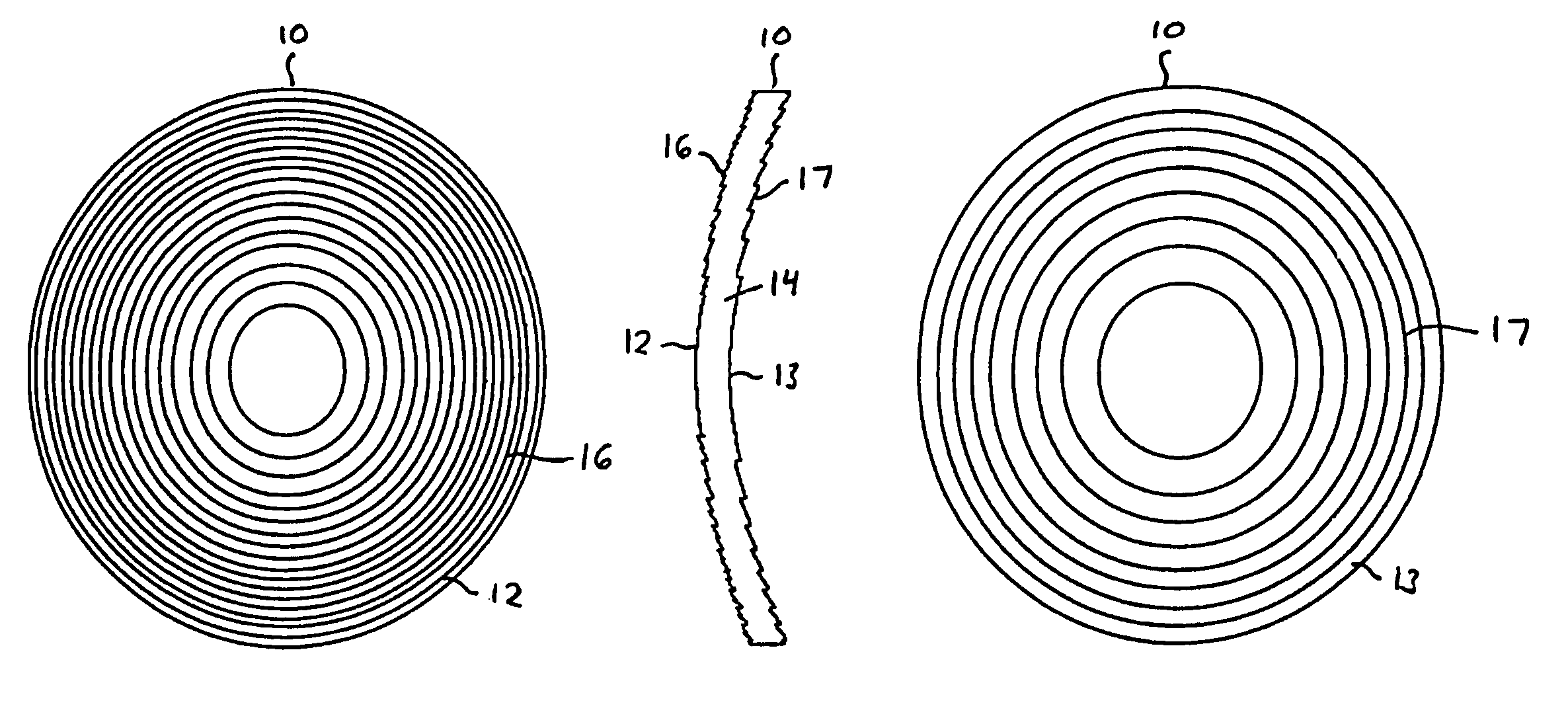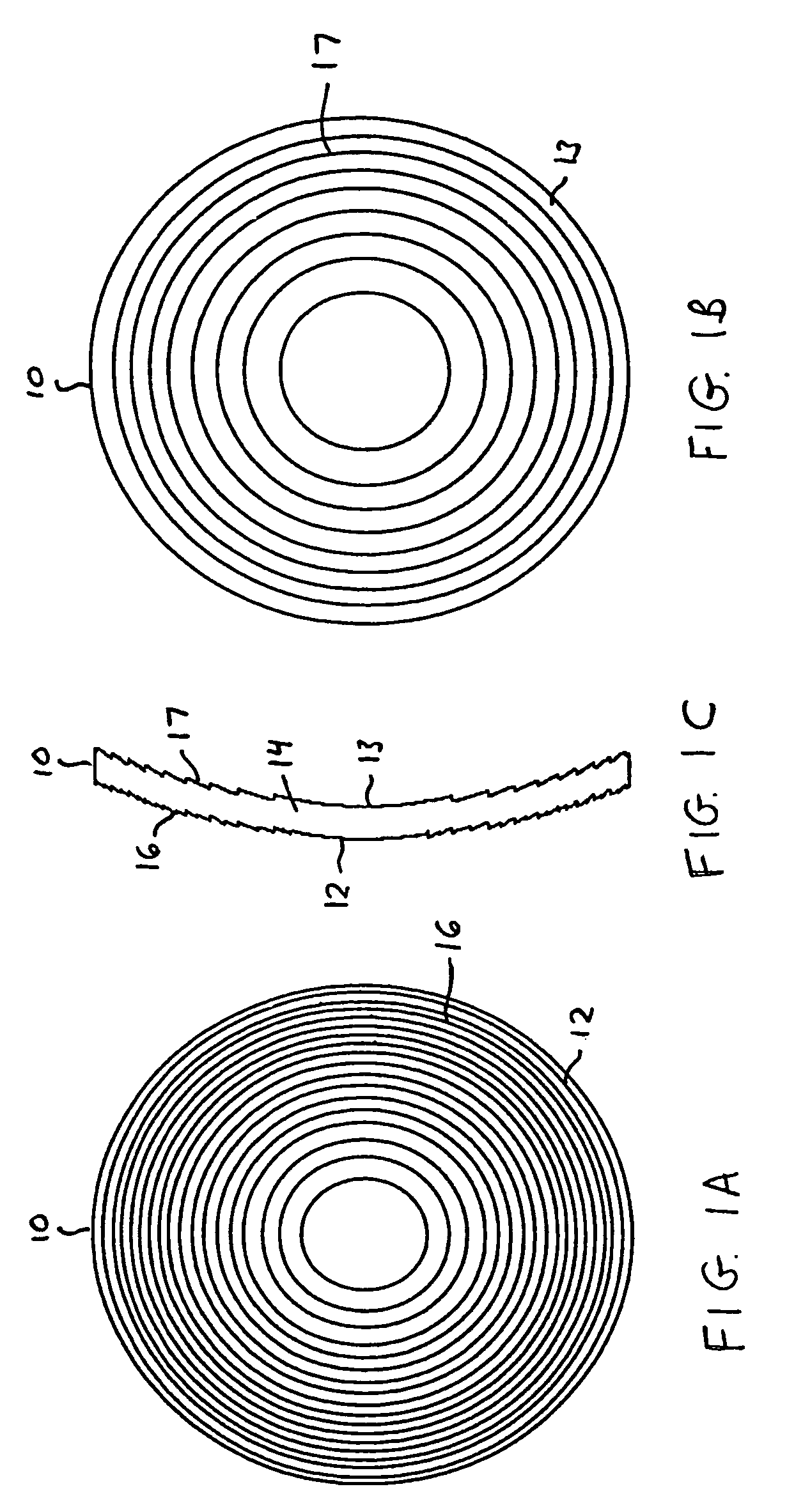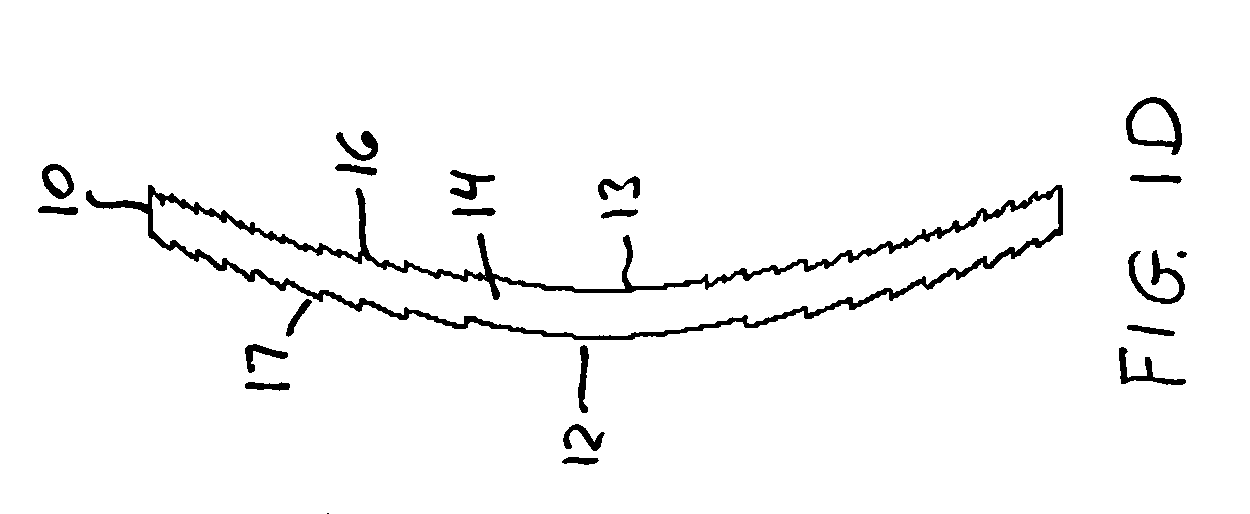Diffractive lenses for vision correction
a technology of diffractive lenses and vision correction, applied in the field of diffractive lenses for vision correction, can solve the problems of not providing two different focal distances, e.g., near and distan
- Summary
- Abstract
- Description
- Claims
- Application Information
AI Technical Summary
Benefits of technology
Problems solved by technology
Method used
Image
Examples
example 1
[0039]In this example, an ophthalmic lens prescription requires a correction of −7 diopters (D) for distance vision, with a +2 diopters (D) add power for near vision. Thus, the two powers (denoted by φ) of the lens are
φdistance=−7 D
φnear=−5 D(=−7 D+2 D=φdistance+φodd)
The lens will consist of a MOD structure 17 with the required distance power on one side (i.e., along surface 12 or 13) of a thin substrate providing the lens body 14, and with a WSD structure 16 with a blazed surface, operating primarily in the 0 and +1 orders, on the other side (or surface).
[0040]The radial locations (rj) of the diffractive zones of the MOD structure are given by
[0041]rj=2jpλ0ϕdistance
[See Equation (1) of incorporated U.S. Pat. No. 5,589,982, with φ0=1 / F0.]
[0042]In this example, the selected design wavelength λ0=555 m (peak of photopic response). The photopic response refers to the efficiency of the human eye's perception of light wavelengths under high illumination. If p=10, the zone radii within ...
example 2
[0051]This example has the same ophthalmic prescription (−7 D distance power, with a +2 D add power) as Example 1, but uses a WSD structure 16 having a square-wave diffractive surface. The square-wave surface introduces one-half wavelength of optical path difference (OPD) (or, equivalently, a phase shift of π radians) over half of each zone and zero OPD over the remaining half of the zone. Since the square-wave diffractive surface has appreciable energy in the +1 and −1 diffraction orders, the power of the MOD structure in this case is φMOD=−6 D and the power of the square-wave WSD surface is φSQw=+1 D. The resulting total lens powers are, as in the previous example
φdistance=φMOD−φSQW=−6 D−1 D=−7 D
φnear=φMOD+φSQW=−6 D+1 D=−5 D=φdistance+φodd
The radial locations (rj) of the diffractive zones of the MOD structure are given by
[0052]rj=2jpλ0ϕMOD
Again, the selected design wavelength λ0=555 nm (peak of photopic response). If p=10, the zone radii within a clear aperture diameter of 10 ...
PUM
 Login to View More
Login to View More Abstract
Description
Claims
Application Information
 Login to View More
Login to View More - R&D
- Intellectual Property
- Life Sciences
- Materials
- Tech Scout
- Unparalleled Data Quality
- Higher Quality Content
- 60% Fewer Hallucinations
Browse by: Latest US Patents, China's latest patents, Technical Efficacy Thesaurus, Application Domain, Technology Topic, Popular Technical Reports.
© 2025 PatSnap. All rights reserved.Legal|Privacy policy|Modern Slavery Act Transparency Statement|Sitemap|About US| Contact US: help@patsnap.com



